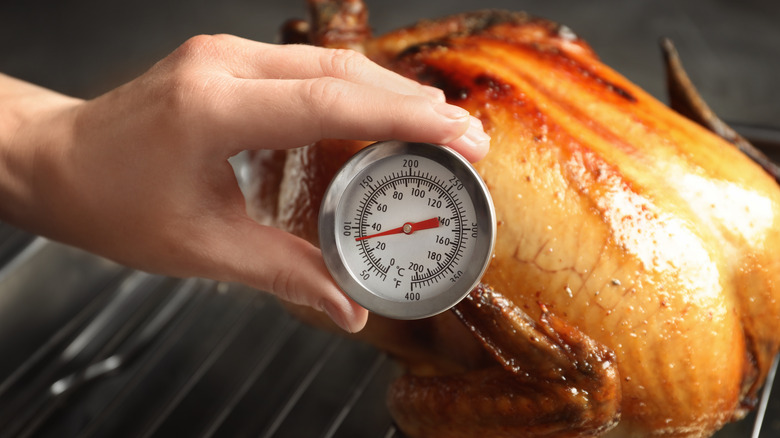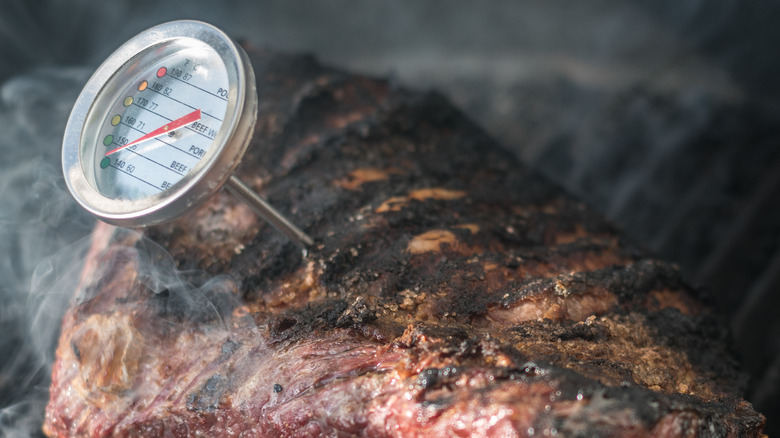The Potential Health Risk Of Using The Wrong Meat Thermometer
When preparing for a big cookout or dinner party, there are a lot of ingredients and items you'll need to be ready. More often than not, though, you'll likely be overlooking one of the most essential kitchen items for these occasions — a proper meat thermometer.
Some home chefs might think that they can tell when their meat has finished cooking by touch or cutting into a steak to check, but these methods are not as reliable as you might think. Taste of Home says that meat thermometers are one of the most essential kitchen items because they are the best way to nail cooking times. Going it alone can lead to overcooking the meat, and delivering a dried-out husk of meat to the dinner table. Worse, you could also end up serving undercooked and potentially dangerous meat to family or guests.
According to the Centers for Disease Control and Prevention (CDC), raw foods that originated from animals are the most likely to be contaminated with dangerous pathogens. For that reason (and many others), safety should be a top priority when preparing meats. Having the fanciest meat thermometer in the world won't solve all of your problems though. You need to make sure that you not only have the right kind of meat thermometer, but know how to use it as well.
How to properly use a meat thermometer
When taking the temperature of cooking meat, it can be hard to get an accurate reading at times. According to Serious Eats, that's because different parts of the meat will have different temperatures. This makes it hard to know what to look for. The most important reading of meat's internal temperature is at its coldest point. More often than not, this will be the thickest part of the meat. However, this won't always be true — which is why it's recommended to move the thermometer around.
Serious Eats doesn't recommend using a leave-in probe thermometer, because it's reliant on a single point of the meat. You can guess that the center is where your probe should rest, but you'll still need to double-check. For example, Butterball recommends leaving a thermometer in the turkey's thigh for an accurate reading. However, this isn't guaranteed to be the turkey's coolest point.
If you decide to use a leave-in thermometer, be sure to check multiple parts of the meat. This will help ensure that the coldest point of the meat has reached the USDA-required minimum temperature. However, there's no need to overcook it to ensure safety. Good Housekeeping suggests letting your food finish cooking away from the heat of a grill, oven, or stove. You can let food rest when it is 5 to 10 degrees below the desired temperature. It will finish cooking through residual heat, as you let the interior juices settle.

